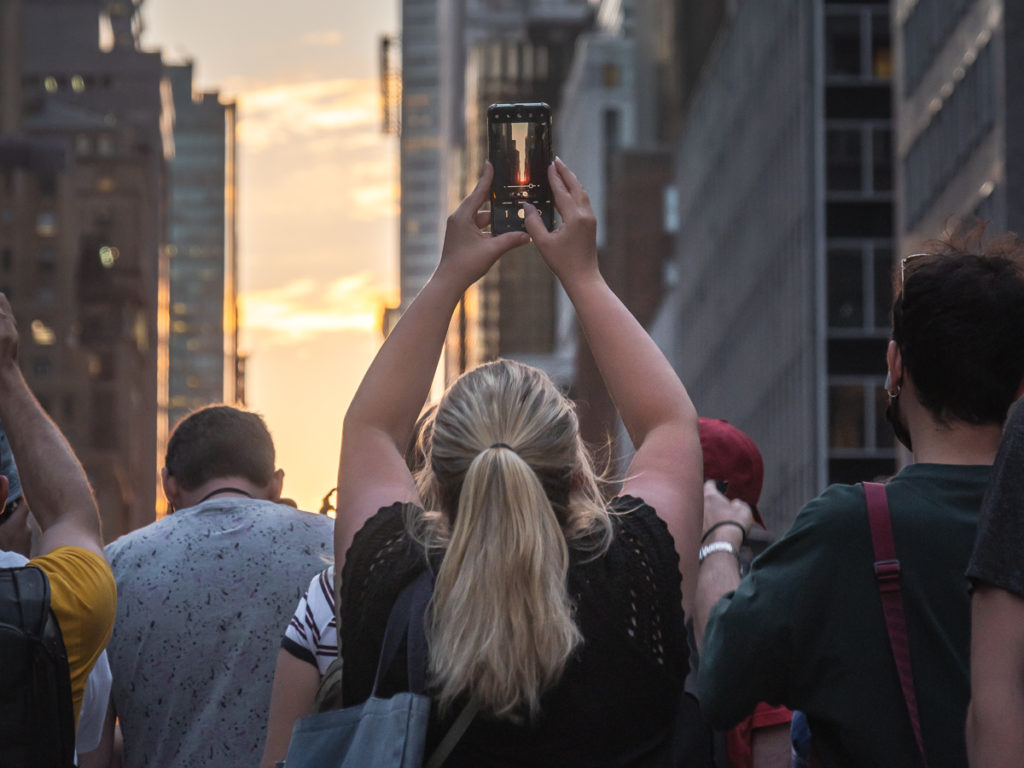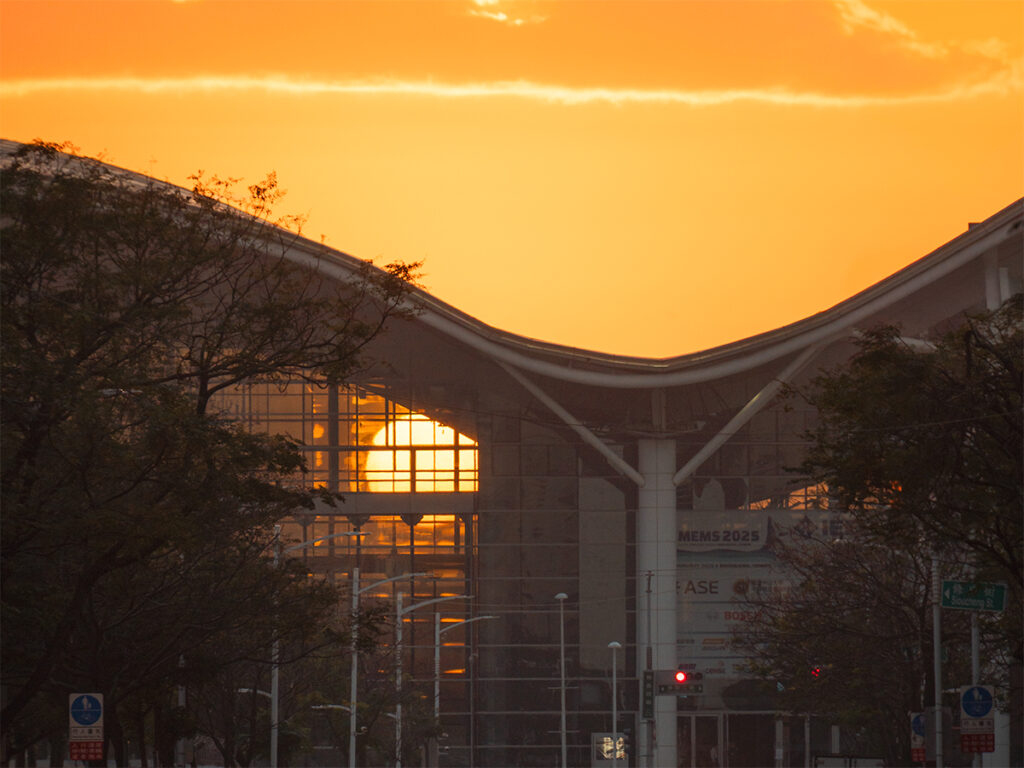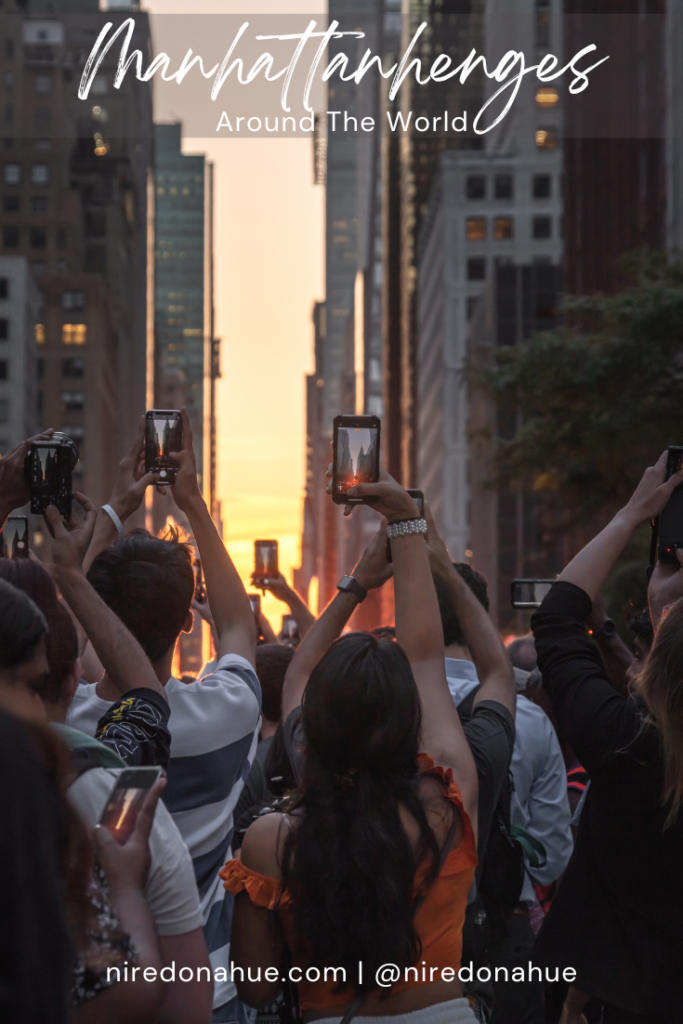Photographing Manhattanhenges Around The World (Updated 2025)
July 12, 2022
Last Updated on May 29, 2025 by Erin Donahue

Over the years, you might’ve seen epic pictures on social media of the sun perfectly centered between New York City buildings. This phenomenon is called Manhattanhenge, it’s when the setting sun aligns precisely with the city’s street grid, creating a radiant glow through the city’s skyscrapers. As a New York City photographer, this is one of my favorite events to capture in the spring and summer.
Even though I’m not a fan of crowds, I still put up with them to get “the shot”. These days, I actually prefer having people in my Manhattanhenge photos because it helps tell the story of the chaos. If you read further down, though, I share a hack for avoiding the crowds. After I posted about Manhattanhenge on my social media, people started telling me about other ‘henges’ they knew about!
The History of Manhattanhenge
“Henge” is used to describe an enclosure, and the first henge was Stonehenge in the UK. While Stonehenge derived its name because of its physical setup, it is also the OG of such an event where the sun is enclosed through something man-made. The sun aligns with the monument during the summer and winter solstices (not equinoxes), with the most famous alignment occurring at the summer solstice sunrise when the sun rises directly over the Heel Stone and shines into the center of the monument. The main axis of Stonehenge is also deliberately oriented to frame the winter solstice sunset. Built between 3000-1500 BCE, this ancient astronomical calendar continues to bring in tourists from everywhere to witness these spectacular solar events.
It’s from there that American astrophysicist Neil deGrasse Tyson realized the sun systematically sets exactly along the Manhattan grid every May and July. Watch the linked video above for a more in-depth explanation.
When Is Manhattanhenge

The exact dates vary slightly year by year, but it occurs twice a year, with the first Manhattanhenge usually happening around Memorial Day Weekend and then the second set in mid-July. Between May and July, the American Museum of Natural History also coined the “Manhattanhenge Effect,” which is where the sun appears between the grid of New York City since it’s low in the sky, but it doesn’t quite “kiss” the grid like it does on the actual Manhattanhenge dates. This is my preferred time to photograph the sun between the grid because the hype is gone, and no crowds!
Where To See and Photograph Manhattanhenge

Since Manhattanhenge happens during sunset, it’s necessary to stand east facing west. Ideally, find a spot as far east as possible. For best results with a wide-open view, go to one of the two-way streets of 14th, 34th, 42nd, or 57th Street.
Tudor City Overpass on 42nd St. and First Ave. is the most popular location. My favorite spot is actually at Gantry Plaza State Park in Long Island City because you can include the NYC skyline. If you want to get ‘the shot’ you should get to your shooting location two to four hours early to stake your spot. No, I’m not exaggerating about the time. Be prepared for crowds everywhere on the streets, especially at Tudor City Overpass. Everyone acts like animals when it’s a clear day and the sun is setting!
Other Manhattanhenges Around The World

Believe it or not, this phenomenon is not unique to New York City! In general, with the availability of planning apps like PhotoPills and PlanIt, alignments with landmarks are easy to map, and anything can technically be a sun-related henge now. That being said, it’s always exciting to see the literal ball of sun so close through a social construct! I’m making it my mission to compile a running list of sun henges around the world, but here’s an introductory list.
Henges in the United States
Reverse Manhattanhenge (NYC)
If you want to avoid the insane crowds and take pictures from the New Jersey side, there is also ‘Reverse Manhattanhenge’. Just like the main event in the summer, this happens twice, but it’s in the winter months of November and January. It also happens during sunrise instead of sunset. A double whammy of cold air and early mornings! The best spot to take pictures of Reverse Manhattanhenge is as far west along 34th St. or from Weehawken, NJ, looking east along 42nd Street.
Chicagohenge (Chicago)
The Windy City has its own sun henge, which occurs in late March during the spring equinox. Unlike New York City where the henges for sunrise and sunset are spread throughout the year, Chicagohenge’s sunrise and sunset both happen on the same day. While the main event is in March, there is another chance to see it in September during the (you guessed it) autumn equinox.
The best places to catch the views are W Randolph St & N Halsted St, W Madison St & N Wells St, W Adams St & N Wacker Dr.
Scrippshenge (California)
This spectacle in San Diego occurs twice a year in early May and early-mid August when the setting sun dips toward the horizon, perfectly aligning between the support beams of the Scripps Pier in La Jolla
California Henge (San Francisco)
Another California sun alignment in San Francisco, but during April and September. Find a spot to photograph from the Bay Bridge and California Street.
International Henges
Stonehenge (England)
As mentioned above, this was the OG of this spectacle event. The sun rises behind the Heel Stone during the summer and winter equinoxes and brings in tourists from everywhere to witness.
Kaohsiunghenge (Taiwan)
One of Taiwan’s largest cities, Kaohsiung, has a similar grid structure to Manhattan, and it occurs from November to January. This aligns with the first set of ‘Reverse Manhattanhenge’ mentioned above. With Taiwan on the literal opposite end of the world from New York City, Kaohsiunghenge happens during sunset. If you want to opt for warmer weather and a later day, book that flight to Taiwan! The city government uses this opportunity to promote tourism in the region and even blocks off certain roads to allow for safer viewing experiences. Or at least they used to. I haven’t seen an update since 2020.
Palermohenge (Sicily)
During the spring equinox, the sun in Palermo rises along the axis of Corso Calatafimi
Luxorhenge (Egypt)
During the winter solstice sunrise every December 22, the sun aligns perfectly with the Temple of Karnak in southern Egypt. This remarkable event illuminates the central axis of the temple complex, which is primarily devoted to the god Amun, once revered as the most powerful deity in ancient Egyptian religion.
Torontohenge (Canada)
If you want to catch Torontohenge in Canada, one of the best times to see it is on Valentine’s Day (February 14). On this date, the half-sun appears partially above the horizon as it lines up with the downtown corridor. This visual can typically be seen for a week after, before the sun’s position shifts. Another opportunity to witness Torontohenge happens around October 25. And just like Manhattanhenge, Toronto also experiences reverse alignments at sunrise, which usually occur near April 19 and August 23.

Camera Gear & Camera Settings For Sun Photography
These are some recommended settings to get started with. As always, experiment on your own depending on the environment and lighting conditions. Also, since you’re dealing with the literal sun do not look directly into it!! Read what camera gear I use to photograph the sun, or check out my storefront on Amazon
- Aperture: f/8-f/11
- Shutterspeed: 1/250+
- ISO: 100
- ND Filters & Tripods are optional
Watch More About Manhattanhenge on YouTube
Read what camera gear I use when I travel or check out my storefront on Amazon.
To keep up to date with everything I share, follow along on my social media!
___________________________________________________________________________________________________________
Pin this post!


Leave a Reply Cancel reply
© Erin Donahue Creative LLC, All Rights Reserved
Terms of Service & Privacy Policy